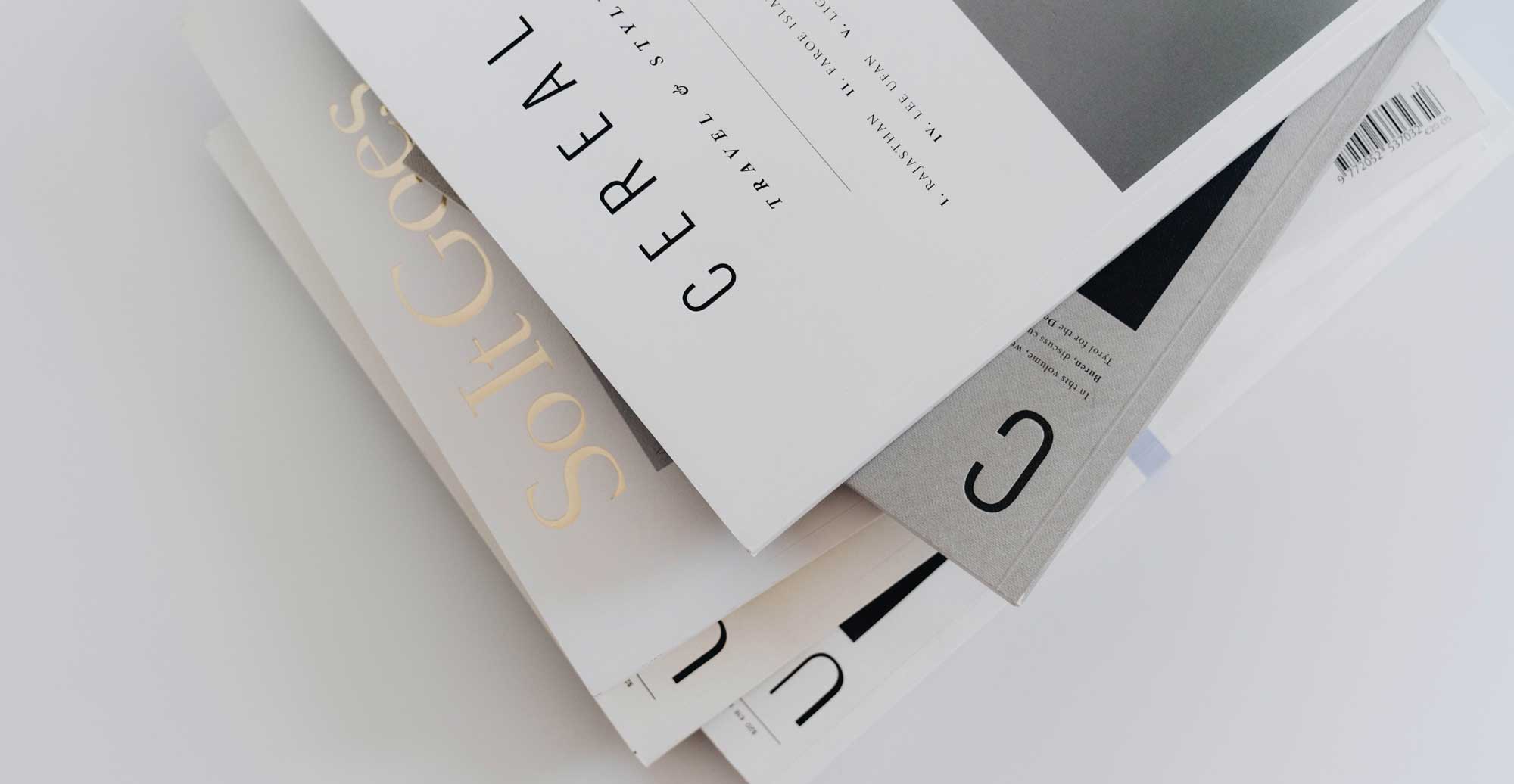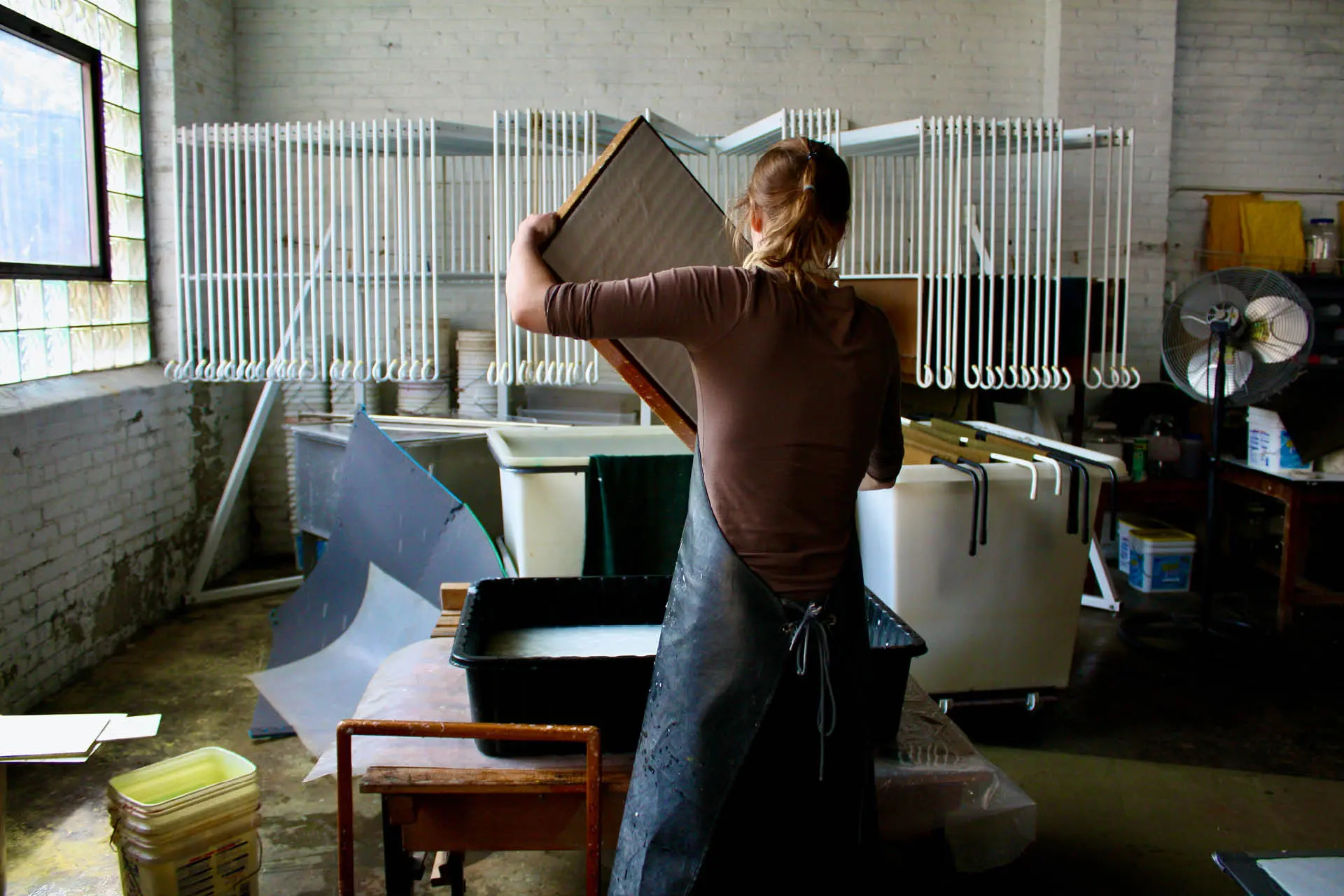There are several different types of paper for printing
Matte Coated and Gloss Coated Paper
Matte coated and gloss coated paper, like their paint counterparts, are descriptive names that need little explanation.
Glossy paper has a very high shine and feels smooth and tactile. Its reflective ability makes colour vivid and pop with vibrancy, making it the popular paper for leaflets and flyers, as well as magazine and brochure covers. Its smooth finish is also perfect for photography, because it allows for sharp image reproduction. Like other gloss surfaces, it can be prone to finger marks, however.
Matte paper is its opposite number, offering a soft, muted surface that reduces glare by subtly refracting light. It feels soft, and slightly textured to the touch, which means it’s easy to write on, unlike gloss. You would use matte coated paper for books and large copy-based print. It is ideal for displays in strong natural light conditions as well as a good choice for printed products in difficult dim lighting.
Silk Coated Paper
Silk coated paper is the middle ground, between gloss and matte coated papers. By binding silk fibres together, means it delivers the best of both worlds. It has a smooth, luxurious feel without shine, so is excellent for magazines and products in difficult light conditions.
Uncoated Paper
You would use uncoated paper to write on and non-commercial printing. Coated papers have a top coat of a protective polymer, which seals the ink, and provides some resistance against damage like stains and tears. That’s why writing on them is difficult, as the polymer repels the ink you use. Choosing uncoated paper allows ink to sink into the paper, although the lack of coating means it is less durable.
Carbon-balanced Paper
Sustainability needn’t cost the earth. For those businesses choosing printing products, using carbon balanced paper directly helps care for our planet, and allows you to offset carbon emissions from your office paper.
Unavoidable carbon emissions from the production and distribution of paper can be offset through the use of carbon balanced paper. This funds the protection of forests around the world.
By choosing carbon balanced paper, you are demonstrating your commitment to make a positive impact on climate change and helping to address a critical threat to our living planet. You are becoming part of the solution.
Watermarked Paper
Watermarking is a popular way of representing quality service and forgery protection. Watermarked paper contains an identifying image that is only visible in certain lights by impressing a water-coated seal or stamp onto paper during the manufacturing process. In 1826, John Marshall invented the dandy roll, and revolutionised watermarking we see today.
Watermarks can be embossed, laid, or hammered in to the paper. Whichever watermarking process, the result is a premium print material that exudes class.


